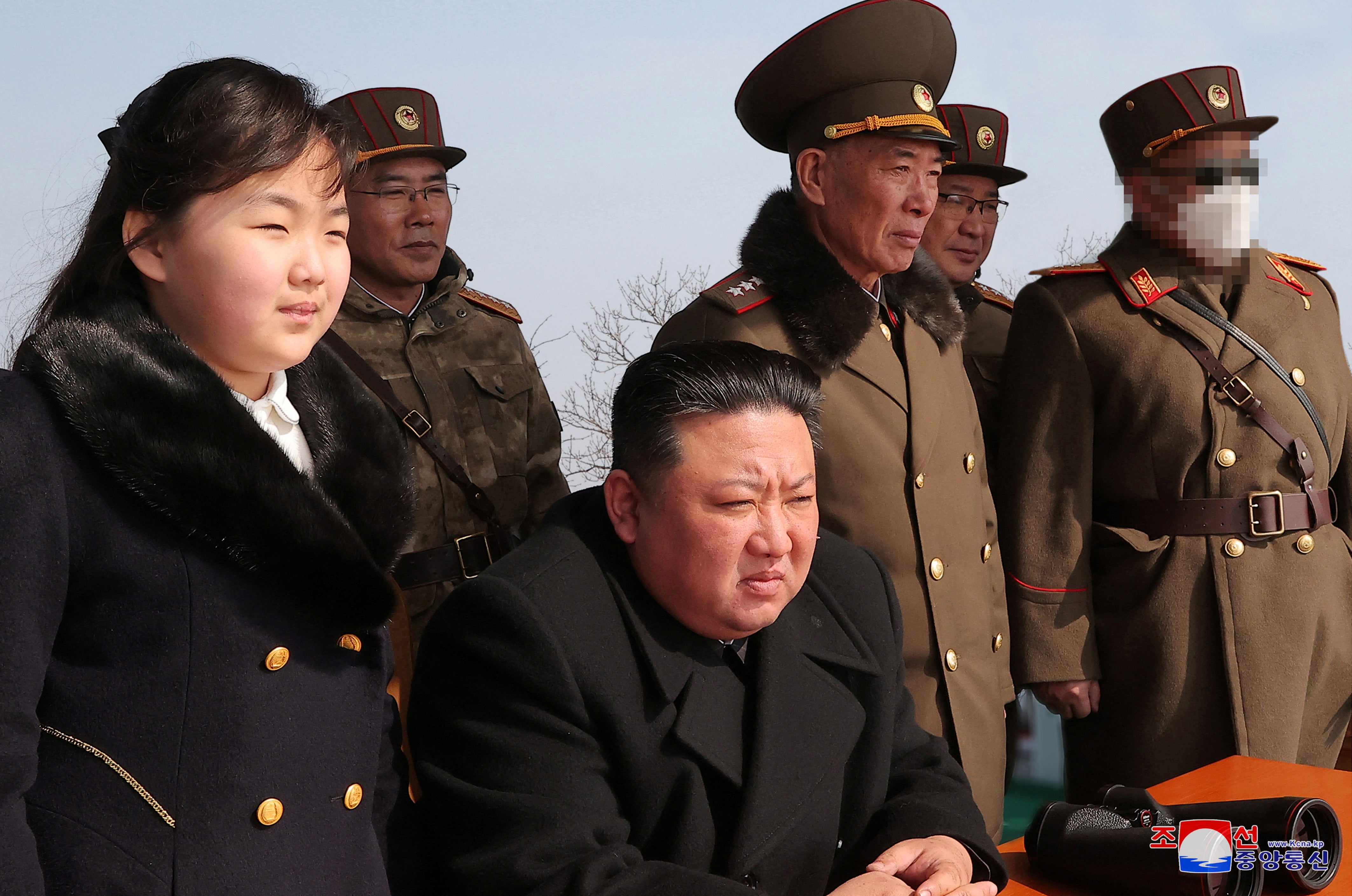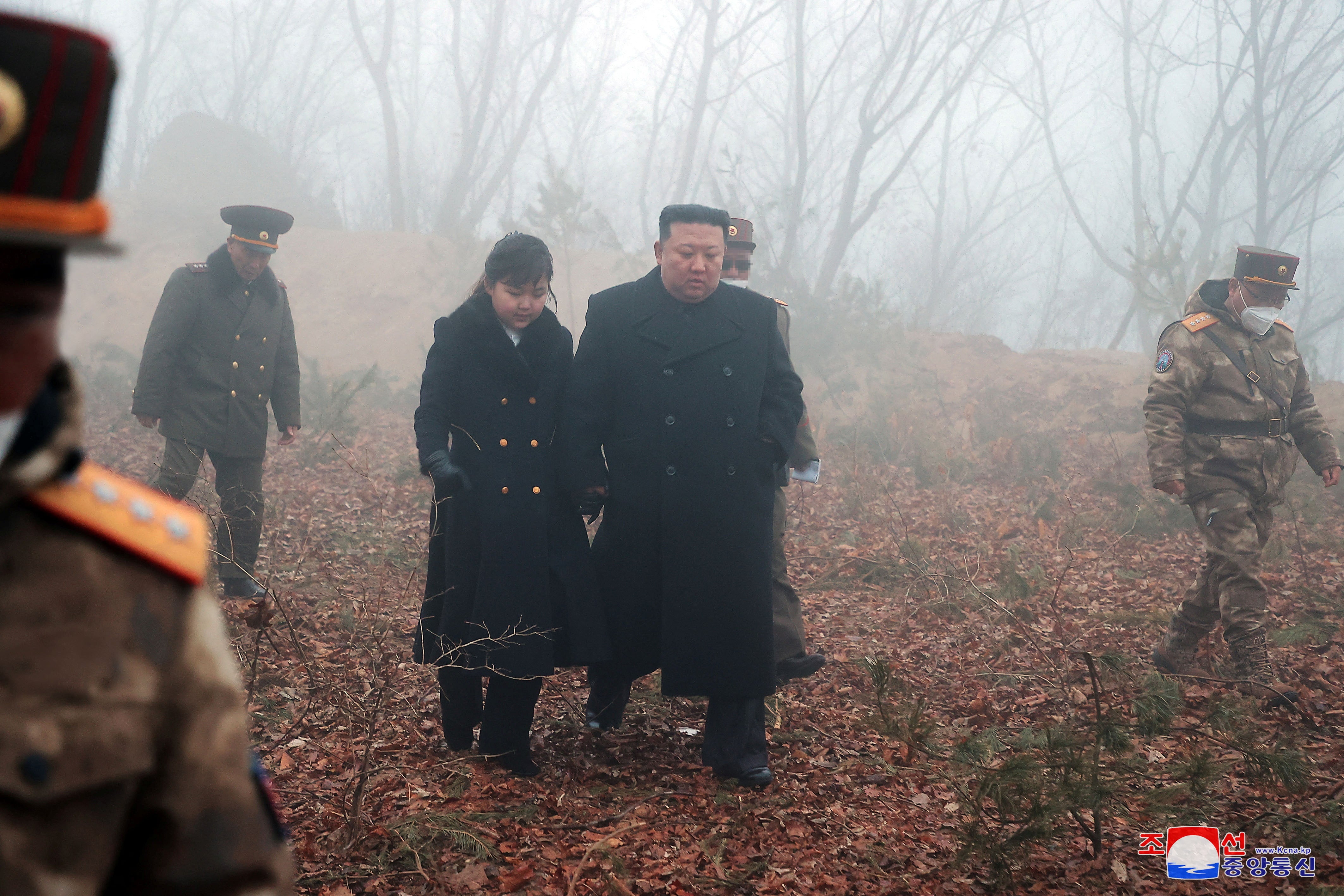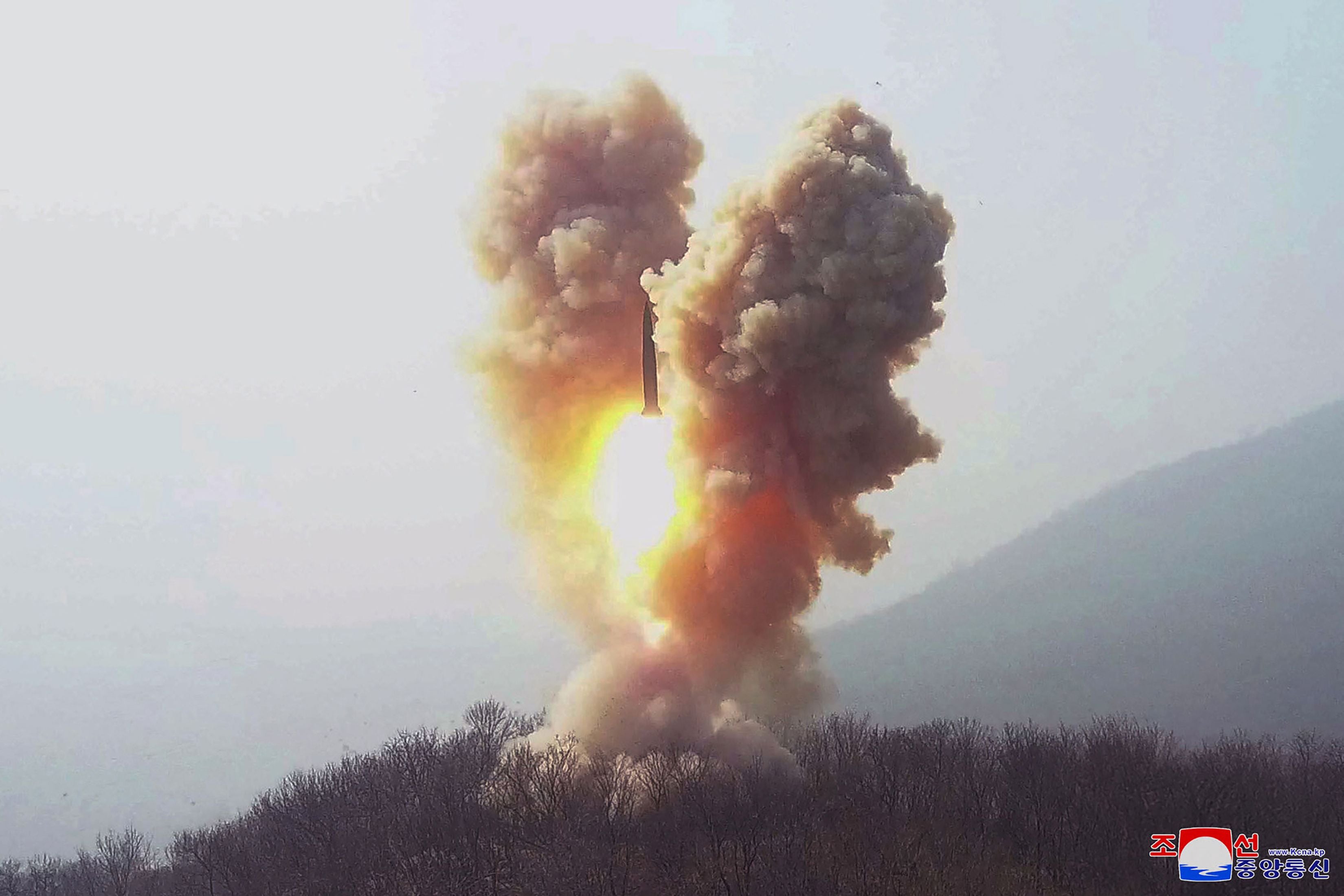Kim Jong-un oversees drills simulating ‘nuclear counter-attack’ along with his daughter
Images released of North Korean leader walking through a forest with his daughter Kim Ju-ae

Kim Jong-un led two days of military drills “simulating a nuclear counter-attack” on South Korea, according to North Korea’s state-run news agency KCNA.
The weekend exercises included the firing of a ballistic missile carrying a mock nuclear warhead. Mr Kim expressed “satisfaction” over the drills that were held to “let relevant units get familiar with the procedures and processes for implementing their tactical nuclear attack missions”.
A tactical ballistic missile launched from Cheolsan-gun in North Pyongan province was “accurately air-detonated at 800m above the target of the Korean East Sea, set at a range of 800km,” said the report, “once again verifying the reliability of the operation of the nuclear explosive control systems and detonators assembled in the nuclear combat department”.
State-run media also published photos showing Mr Kim walking through a forest with his daughter Kim Ju-ae – who has appeared in public a number of times since last year and is rumoured to be his successor – and senior military officials. A missile the North described as a tactical nuclear weapon system was also photographed soaring from the woods spewing flames and smoke.
The drills are the fourth show of force from Pyongyang in a week and came as the US and South Korea stage Freedom Shield, their own largest joint military exercises held in the past five years.
The Western drills included the use of B-52 bombers, which are capable of delivering a nuclear weapon, according to the Associated Press.
North Korea has warned that such drills could be seen as a “declaration of war”.

Kim Yo-jong, the sister of the North Korean leader, had earlier this month warned that the nation was ready to take “quick, overwhelming action” in response to US and South Korean joint military drills.
On Sunday, Mr Kim called for the country to stand ready to conduct nuclear attacks at any time to deter war, accusing the US and South Korea of expanding joint military drills involving American nuclear assets.
“The present situation, in which the enemies are getting ever more pronounced in their moves for aggression against the DPRK, urgently requires the DPRK to bolster up its nuclear war deterrence exponentially,” KCNA quoted him as saying, using North Korea’s official name, the Democratic People’s Republic of Korea.

Seoul’s Joint Chiefs of Staff said on Sunday that the short-range ballistic missile fired by Pyongyang landed in the East Sea, also known as the Sea of Japan.
They branded the drills a “serious provocation” that violated UN sanctions and said they were being analysed by the US and South Korean intelligence services.
Mr Kim said his enemies are getting “ever more pronounced in their moves for aggression” and urged the need to bolster his nuclear deterrent “exponentially” and laid out unspecified “strategic tasks” for further developing his nuclear forces and improving their war readiness, according to KCNA.
The foreign ministers of the Group of Seven (G7) nations said on Sunday that they regret inaction by the UN Security Council over North Korea’s missile tests.
In a statement, they noted “obstruction” by some members of the UNSC, without naming China and Russia, that have blocked recent attempts to do more in response to North Korea.
The group condemned North Korea’s 16 March launch of an intercontinental ballistic missile as “undermining regional and international peace and security”.
It’s clear that North Korea – with its ramped-up testing activity – is making “considerable progress” in nuclear weapons technology, said Jeon Ha Gyu, the spokesperson of South Korea’s Defense Minister.
Leif-Eric Easley, associate professor of international studies at Ewha University in Seoul told The Independent in an email that the new exercises were more than just sending a message.
“The Kim regime often makes clear its disdain for US-South Korea defence exercises, accusing them of being preparations for an attack on North Korea and thus justifying its own missile tests,” he said.
“But a Hwasong-17 launch is expensive so [there’s] more motivating it than just international political signalling.”
“Pyongyang is trying to advance its missile technology while also sending a domestic message about national pride and loyalty with the presence of the leader’s daughter.”






Join our commenting forum
Join thought-provoking conversations, follow other Independent readers and see their replies
Comments